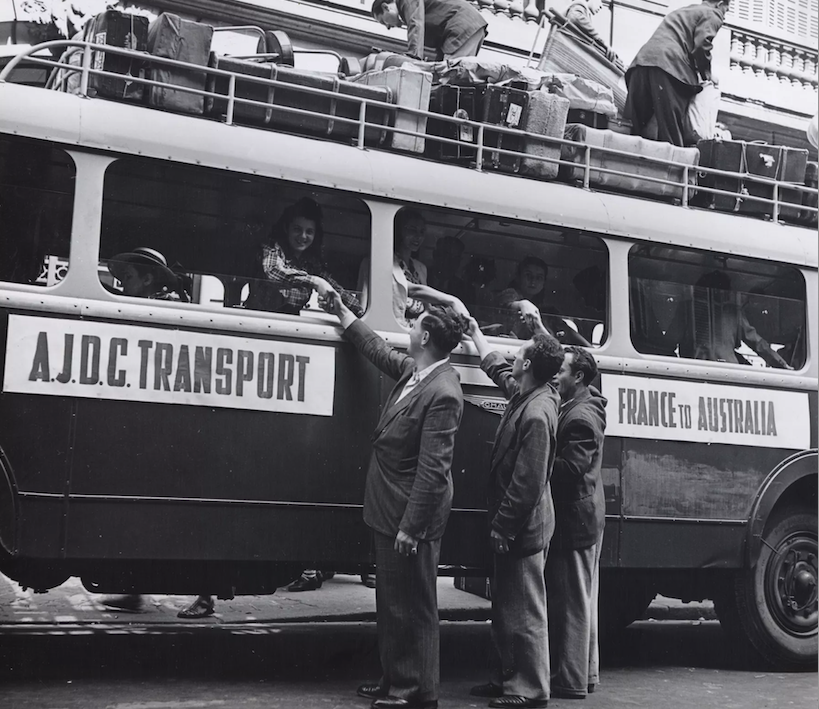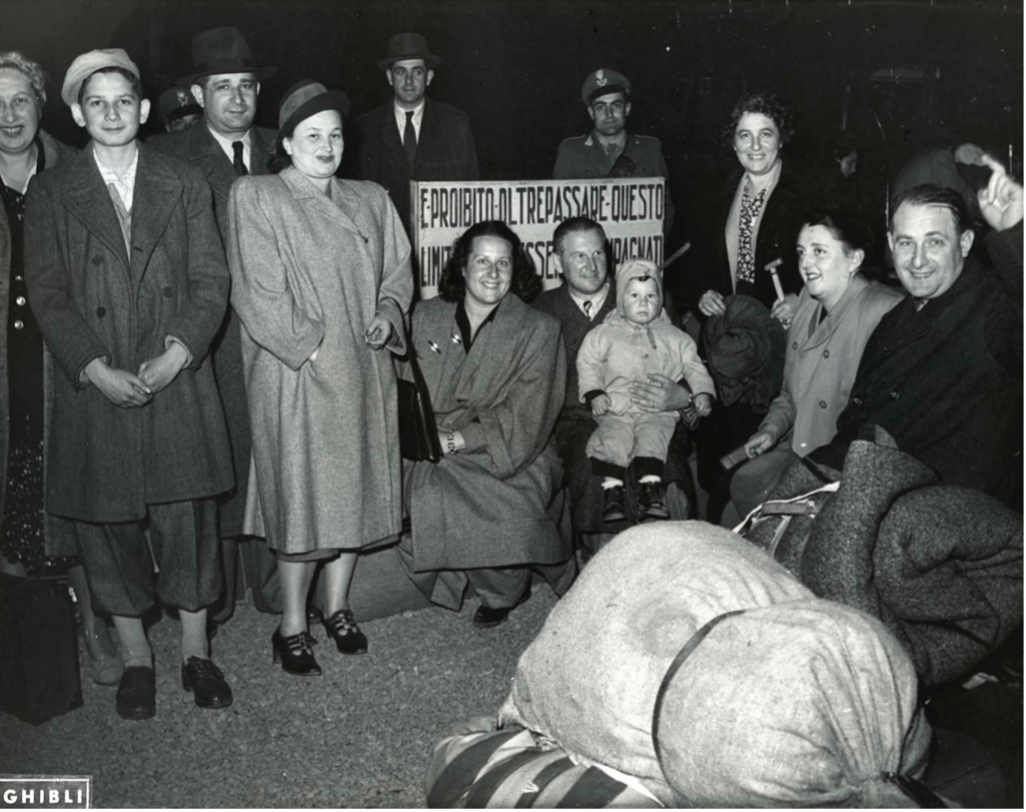- Pulished by
-
JDC at
-
September 05, 2022
At the end of WWII tens of thousands of liberated Jews found themselves with nowhere to go. By late 1945, some 75,000 Jewish survivors sought refuge in displaced-persons (DP) camps that were hastily set up in Germany, Austria, and Italy. These camps were poorly resourced and quickly became overcrowded. A massive aid program ensued to provide urgent necessities to these survivors in the face of critical shortages. The JDC was instrumental in providing desperately needed food and clothing as well as later facilitating reunification of loved ones who had been separated by the war.
Most of the surviving Jewish community wished to leave Europe and build a new life far from the devastation they had suffered. For some, Australia represented a promising haven and in the period from 1945 to 1961 around 25,000 Jewish refugees migrated to Australia reinforcing an Australian Jewish community that numbered only 23,000 in 1933.
The passage of these refugees was aided in large part by the JDC who together with Australia’s small Jewish community, were instrumental in ensuring the peaceful resettlement of Holocaust survivors.
After the Nazi’s seized power in 1933, many Jews sought to escape persecution. It was not easy for Jewish refugees to be granted passage to Australia. Anti-Jewish feelings could be found amongst both sides of the political spectrum. Such views were notably expressed by Australia’s delegate at the 1938 Evian Conference, Thomas W. White, who declared: “As we have no real racial problem, we are not desirous of importing one by encouraging any scheme of largescale foreign migration.”
Ultimately some 9,000 Jews from Germany, Austria and Czechoslovakia arrived in Australia before the outbreak of war in 1939 made further emigration all but impossible. This small community was ‘deeply moved by the enormity of the destruction of European Jewry, and were determined to do everything possible to assist in the rehabilitation of survivors by sponsoring their emigration to Australia.’ (Rutland, 2009)
After 1945 there was a growing understanding amongst policy makers that Australia would not be able to sustain the rate of economic development without increasing its refugee intake. This sentiment was popularised by the slogan ‘populate or perish.’
As the number of immigrants from non-British backgrounds increased, so did anti refuge hysteria, often propagated by the media. During this time, there was also an acute housing shortage in Australia which exacerbated anti refugee sentiment. Despite considerable sympathy for the plight of the Jewish people by the Immigration Minster Arthur Calwell, Australian policymakers were not enthusiastic about facilitating Jewish immigration and ‘insisted that the reception and integration of refugees was the responsibility of the Jewish community. ’ (Rutland, 2009)

The Australian Jewish leadership had been eager to assist the resettlement of European Jewry before the war and had already established ties with the JDC in America. After the war, these connections were quickly resumed and the enormous task of resettling the survivors of the Holocaust was taken up by the JDC.
The task was further compounded by a series of discriminatory policies introduced by the Australian government to restrict the number of Jewish migrants coming to Australia. This included the introduction of quotas on ships and airplanes coming from Europe to Australia which were required to only contain 25% Jewish passengers.
Nevertheless, the JDC successfully facilitated the migration program. From financing resettlement, which included providing hostel accommodations, English classes, employment assistance, and interest-free loans to establish businesses.

The Joint’s archives and online database offer a unique opportunity for the Australian community to explore and discover this history. If you would like to know more about your family’s history search the Joint’s archives.
Get updates from The Joint & JDC
It’s the easiest way to keep up to date with all our latest news, events and fundraising activities.
© 2024 The Joint Australia | Partner of American Jewish Joint Distribution Committee, Inc

